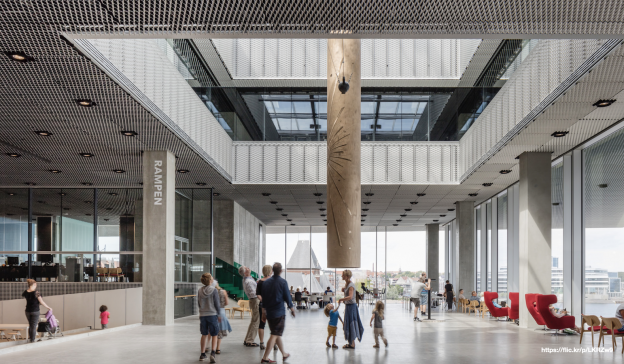
Participatory Service & Transparency
“The participatory library is open and transparent, and it communicates with its community through many mechanisms… The community should be involved in the brainstorming for new ideas and services, they should play a role in planning for those services, and they should definitely be involved in the evaluation and review process.”
—Michael Casey
This week, we explore what it really means to create a library that invites participation and shares openly—with intention and heart. I love this quote from Michael Casey, which gets at the core of it: participatory service is about building something together. It’s about creating space for users to contribute ideas, shape services, and help guide where the library is headed.
At the same time, transparency is key. A transparent library doesn’t hide behind layers of bureaucracy or closed doors. It talks—and listens. It invites feedback, shares decisions, and builds trust through open conversation. The talking library has no secrets. It cultivates a culture where users expect to be included, where communication is honest and continuous.
As we move through this module, we’ll consider all the ways libraries can foster participation—from program planning to service design to daily interactions—and how openness strengthens the connection between library and community. You’ll also read a few pieces from “The Transparent Library” column that I co-wrote with Michael Casey for Library Journal. These pieces reflect our ongoing thinking about how libraries can respond to change with empathy, presence, and a commitment to shared purpose.
Let’s think about how we, as hyperlinked librarians, can create experiences that are not only innovative—but inclusive, transparent, and built with our communities every step of the way.
Lecture Recording
Things to Read
- Stephens, M. (2016). “Stuck in the past” in The Heart of Librarianship, p. 54
- Stephens, M. (2016). “The age of participation” in The Heart of Librarianship, p. 79
- Stephens, M. (2016). “Collection Bashing & Trashing” in The Heart of Librarianship, p. 99
- Stephens, M. (2019). “Telling Stories” in Wholehearted Librarianship, p. 91
- Participatory Service
- Schneider, K (2006). The User is Not Broken.
- Boekesteijn, E. (2011). DOK Delft takes user generated content to the next level.
- Casey, M. (2011). Revisiting participatory service in trying times.
- Mack, C. (2013). Crowdsourced design: Why Los Angeles is asking the public to create the library of the future.
- Kenney, B. (2014). The user is (still) not broken.
- Fons, T. (2016). Making Libraries Visible on the Web
- O’Brian, C. (2019). How San Francisco Libraries are Embracing Their Changing Role.
- Zulkey, C. (2019). Automatic for the People.
- Ferrell, J. (2022). 13 Things You Didn’t Know You Could Do With an SF Library Card.
Transparency
- Zeigler, T. (2006). Chris Anderson Calls for Radical Transparency in Media.
- Casey, M., & Stephens, M. (2007). A road map to transparency.
- Casey, M. & Stephens, M. (2008). Embracing Services to Teens
- Schmidt, A. (2013). Earning trust. The User Experience. PDF: SchmidtEarningTrust
- Kenney, B. (2015). Lesson’s From Seattle’s Failed Bid to Rebrand its Public Library.
- Library Journal (2022). 2022 Fines and Fees Survey.
- Urban Libraries Council. (n.d.) Fine Free Map.
Things to View
- Local Stories at DOK
- NC State University. (2013). James B.Hunt, Jr. Library.
YouMedia
Things to Explore
Participatory Service
- NYPL Public Domain Image Collection (n.d.)
- Werner, Sarah. (2015). How to Destroy Special Collections with Social Media.
- Free, C. (2020). This Growing Trend Lets Kids Check Dolls and Games from a Toy Library.
- Rivenberg, R. (2022). What Can a Library Card Get You? Try a Popcorn Maker or a Ukulele.
- National Archives (2022). Citizen Archivist Missions.
- Local Tools (n.d.) Find Your Local Tool Lending Library.
Transparency
- Casey, M., & Stephens, M. (2007). Going to the field.
- Casey, M., & Stephens, M. (2007). Turning “no” into “yes”.
- Casey, M., & Stephens, M. (2008). Six signposts on the way.
- Casey, M., & Stephens, M. (2008). Six more signposts.
- Casey, M., & Stephens, M. (2008). Check your ego at the door.
- Stephens, M. (2016). “The Transparent Library School” in The Heart of Librarianship, p. 115
- Coelho, S. (2021). Fine Free Libraries Trend.
